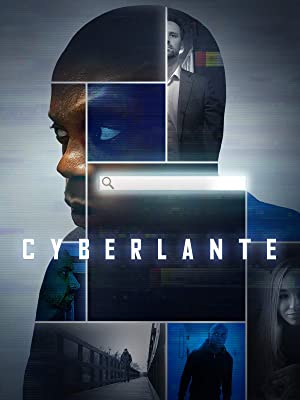‘CYBERLANTE’ – smartphone-shot feature film pulled together within a week goes on worldwide release

UK producers Raya Films have released cybercrime thriller, Cyberlante, a production born from the chaos of an abandoned shoot and filmed entirely on a GOOGLE PIXEL ORIGINAL SMARTPHONE.
On 15 February 2019, principal photography for the third feature film by Raya Films got underway. On day three, after two key crew members quit the set, director James Smith was left with no camera gear and no camera department. The schedule was now impossible to meet, and the shoot was postponed. Less than 24 hours later, a new outline treatment was created for another version of the movie based on the availability of the remaining cast and locations, not to mention some new recruits. A few days later, photography commenced with a very different Cyberlante theme.
Fast-forward to 21 March 2019. After shooting guerilla-style in locations that ranged from freezing, waterlogged fields to luxurious properties, and following events that encompassed scripting on the fly, and casting actors in less than a day (oh, and an armed robbery at one of the locations!), Smith and team finally wrapped on a production that utilised the latest lightweight camera phone technology and sees the emergence of some new and exciting acting talent.
Cyberlante, is now available to stream, rent, or buy on Amazon worldwide, with further platforms and channels to be announced soon.
Amazon.co.uk (UK)
The first in a double-bill of Smartphone-shot movies, director James Smith and producer/writer Caroline Spence have joined the ranks of SEAN BAKER with his SUNDANCE headliner Tangerine (shot on an Apple iPhone 5S) and Oscar-winning director STEVEN SODERBERGH with Unsane (shot on an iPhone 7 Plus), by shooting Cyberlante entirely on a Google Pixel Original. This will be closely followed by Surveilled, a ‘whodunnit-horror’, and an even bigger project shot with similar techniques.
Making full-length narrative features on mobile phone technology, however, is still rare since most content produced in this way comprise short films, promos and web series.
Despite the many challenges, the experience of shooting on a phone was a liberating one, and the team wrapped filming after only twelve days.
“With such lightweight equipment our ability to move quickly between locations saved a lot of time,” explains screenwriter/producer, Caroline Spence. “Plus we were able to seize unplanned photographic opportunities and weave them into the fabric of the story. James captured some beautiful cinematography with the camera phone that many would find difficult to distinguish from larger-scale movies.”
